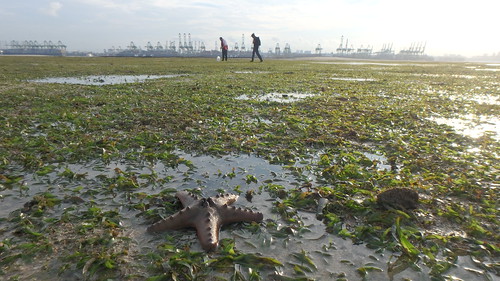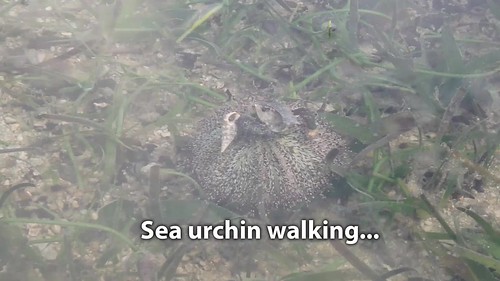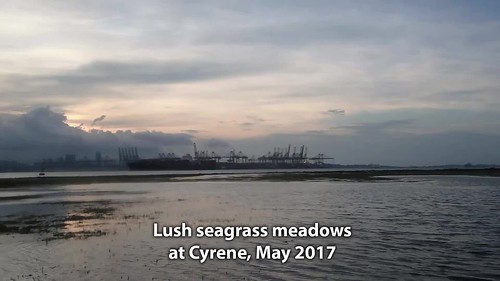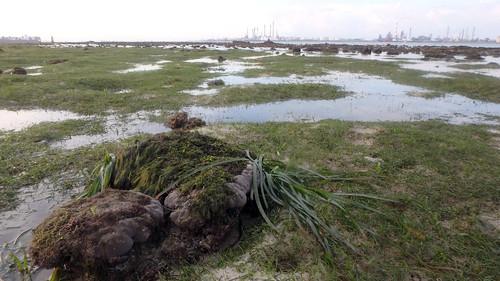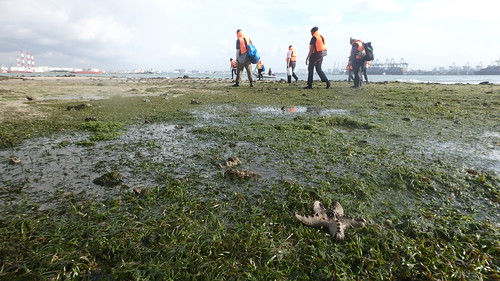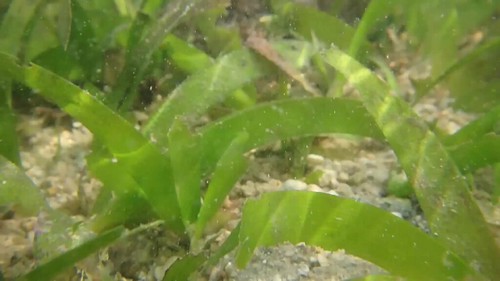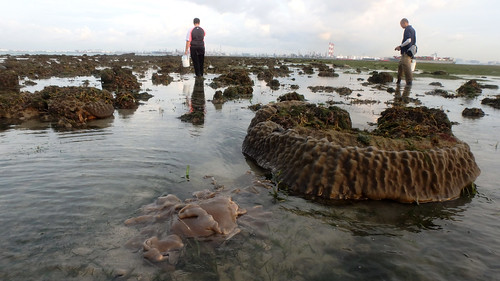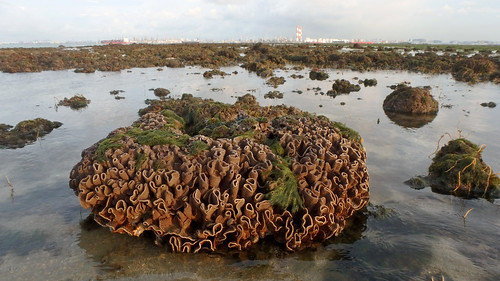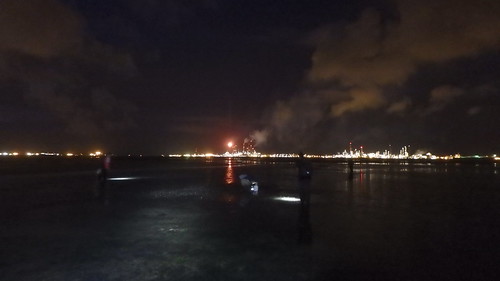The search goes to Cyrene today, with Dr Sérgio N. Stampar, an expert in cerianthids (peacock anemones).
The seagrass meadows were lush today, and we also saw many cerianthids. But the reefs appear quiet.
It was a relief to find many cerianthids today. But it appears they were only of at most two species. Compared to yesterday's trip to Changi where we found many different species. Also called peacock anemones, cerianthids are related to but are not true sea anemones. Unlike sea anemones, cerianthids build a tube to live in (and hence also called tube anemones) and they have ring of short tentacle in the center, with a ring of longer outer tentacles.
There were a wide variety of anemones. I saw several Giant carpet anemones, one Magnificent anemone, one Frilly anemone and one Snaky anemone. I also saw a few Haddon's carpet anemones. There were lots of Banded bead anemones, although they might be something else. And Chay Hoon found the Brown peachia which was first described from Singapore by Nicholas Yap!
Dr Neo Mei Lin led a team to survey the White sea urchins on Cyrene. There were a lot of the urchins today! Here's a video of one of the sea urchins walking by moving its spines. It also has lots of long tube feet.
It was relief to see that the seagrasses are doing well on Cyrene. Seagrasses are lush in the deep pool and everywhere on Cyrene. Here's a video of what we saw, plus a little glimpse of the reefs. Our last survey here was in Feb 2017.
It was nice to see lots of long Tape seagrass! Although there were also still many that were cropped. I also came across a large patch of Smooth ribbon seagrass.
I saw several bulbous hairy balls and they turned out to be fruits of Sickle seagrass. Chay Hoon point out a fruit that had opened, it looks like a flower.
I saw a few Knobbly sea stars, scattered across the seagrass meadows. Most of them were medium sized.
Seagrasses are important habitats for a wide variety of creatures. Here are some that I saw today.
We had a brief look at the reefy parts. This shore was hit by mass coral bleaching last year. There were few living corals. But I didn't see any bleaching corals.
There were some impressive large colonies of hard corals.
There were only a few hard corals, but all of them were alright.
There were also many zoanthids of various kinds.
We arrived before dawn, with flaring at the petrochemical plants of Pulau Bukom.
Cyrene lies in the middle of the industrial triangle made up of the massive industries on Jurong Island, huge refineries on Pulau Bukom and the world-class container terminals at Pasir Panjang.
I'm glad to see the seagrasses are doing well, and I hope the reefs will recover too by the time we return to Cyrene.
Meanwhile, the rest of the team explored Changi and saw special animals.
More photos by Marcus Ng.

